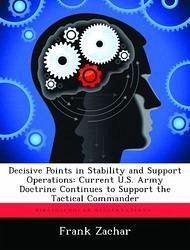Nicht lieferbar

The Future of NATO's Tactical Air Doctrine
Versandkostenfrei!
Nicht lieferbar
This study analyzes the need for changes to NATO airpower doctrine to reflect current Post-Cold War realities. NATO air doctrine does not yet reflect the actuality of today's operations, nor does it anticipate the probable future employment of NATO's airpower. Out-of-area operations and PFP participation in NATO operations will have profound effects on combined doctrine, training, organizational structures, exercises and employment of forces. NATO's tactical doctrine revision process served the alliance well during the Cold War. But today, the international environment has drastically changed:...
This study analyzes the need for changes to NATO airpower doctrine to reflect current Post-Cold War realities. NATO air doctrine does not yet reflect the actuality of today's operations, nor does it anticipate the probable future employment of NATO's airpower. Out-of-area operations and PFP participation in NATO operations will have profound effects on combined doctrine, training, organizational structures, exercises and employment of forces. NATO's tactical doctrine revision process served the alliance well during the Cold War. But today, the international environment has drastically changed: both the nature of the threat and the use of NATO airpower during conflict have changed. The current doctrinal revision process has proven too slow and cumbersome to provide adequate direction for air strategists during ongoing operations. There are many new doctrinal areas that must be thoroughly addressed so that NATO can chart a course for the future that in the end provides the best, most effective mix of forces. This work has been selected by scholars as being culturally important, and is part of the knowledge base of civilization as we know it. This work was reproduced from the original artifact, and remains as true to the original work as possible. Therefore, you will see the original copyright references, library stamps (as most of these works have been housed in our most important libraries around the world), and other notations in the work. This work is in the public domain in the United States of America, and possibly other nations. Within the United States, you may freely copy and distribute this work, as no entity (individual or corporate) has a copyright on the body of the work. As a reproduction of a historical artifact, this work may contain missing or blurred pages, poor pictures, errant marks, etc. Scholars believe, and we concur, that this work is important enough to be preserved, reproduced, and made generally available to the public. We appreciate your support of the preservation process, and thank you for being an important part of keeping this knowledge alive and relevant.










